Norman Leung Lee aka the ‘dim sim bandit’ paid with his life in failed $1m Melbourne Airport heist
DIM sim maker Norman Lee — linked to the infamous Great Bookie Robbery — bit off more than he could chew in a million-dollar cash grab at Melbourne Airport.
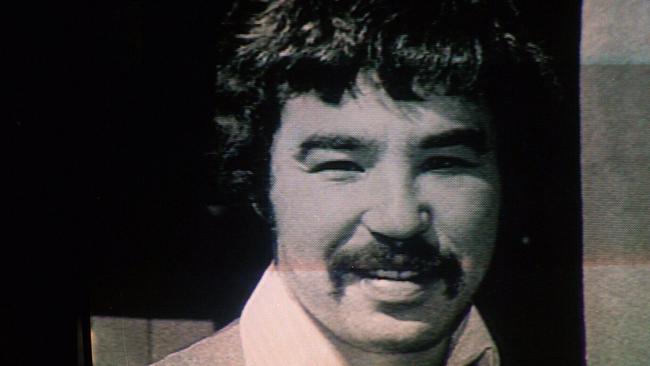
True Crime Scene
Don't miss out on the headlines from True Crime Scene. Followed categories will be added to My News.
IT was early afternoon on a busy Tuesday in July back in 1992 when bandit Norman Lee — once charged over the infamous Great Bookie Robbery — was to take on his last holdup.
Working with two other men, a fellow gunman and an armed driver, Lee had his sights set on $1 million cash being handed over by Armaguard staff at the Ansett freight terminal at Melbourne Airport.
Lee and his fellow gunman were wearing rubber masks and carrying handguns.
The duo stormed the freight office as their driver waited behind the wheel of the gang’s stolen Ford panel van.
Inside the van, at arm’s reach, were two loaded Armalite self-loading rifles.
Watching the bandits were members of the Victoria Police armed robbery squad and the Special Operations Group, and National Crime Authority officers.
As the two gunmen tossed the money bags into the back of the stolen van, and stepped up inside the vehicle, five Special Operations Group members — in an unmarked van — swooped on the Ford.
As the SOG officers moved, the getaway driver sped off, causing Lee and his fellow gunman to spill to the roadway.
The driver believed they were still in the back, and kept driving.
It was then all hell broke loose.
“That the panel van should have fled the scene leaving Lee and (his accomplice) behind in full unobstructed view was totally unexpected by both camps,” Coroner Jacinta Heffey would later say.
“What occurred next was totally unexpected and over in a few seconds.”
Lee chased the van, screaming at the driver to stop.
One of the five SOG men blasted the Ford’s rear left tyre and then saw Lee running towards him.
A witness later said: “It appeared to me as though he (Lee) was going to confront the police.”
The SOG officer involved said: “I was then aware he had a silver handgun.
“It was pointed at me and I called on him (to drop it). It was lowered slightly. He then brought it up again and I fired and he went down.”
A second SOG officer also shot Lee.
That SOG officer said: “It happened so quick. The driver was looking into the back of the car. We called on him (to surrender). He looked at us and accelerated away.
“I then saw two males (on foot) with masks. Almost simultaneously I noticed ... a big silver gun pointed at us. I fired one shot.”
Lee died where he fell.
Beside his body was a fully loaded .357 Magnum revolver, and his rubber mask.
He had twelve bullets in his pocket.
The third SOG officer who fired shots was the one who dropped Lee’s fellow gunman.
“I could see that both (bandits) were armed with handguns as they had them pointed at me,” that SOG member said in a statement.
“I was shouting, ‘Police! Don’t move! Drop the gun!’ Although they were both pointing their firearms at me, I was concentrating on (Lee’s accomplice) as I believed (other SOG officers) would secure Lee.”
The wounded bandit’s shoulder was a mess, but he was alive.
Other police, meanwhile, had rammed the getaway car as the driver attempted to speed away.
The wheelman was arrested.
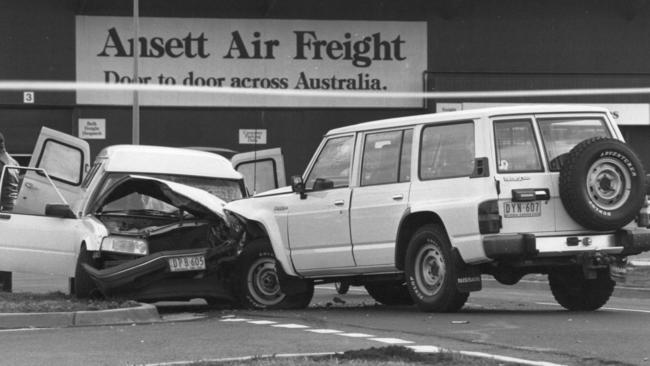
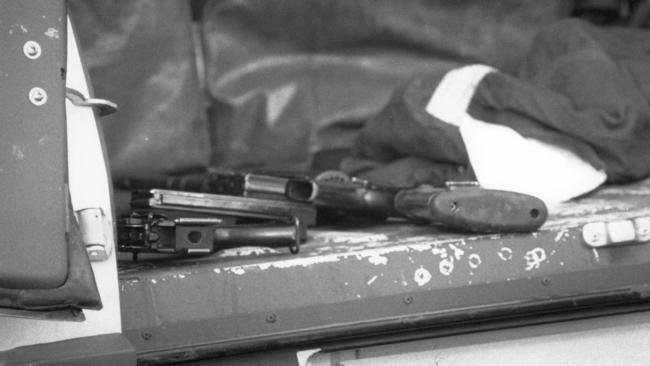
All the bandits had been armed and ready for confrontation.
“The three robbers were in possession of far more weaponry and ammunition than they could need to perform an armed robbery alone,” Coroner Heffey later found.
“In evidence (the co-offenders) said that being equipped with extra weaponry and ammunition was Lee’s idea. If this is true then it supports an image of Norman Lee as a person more likely to try to shoot his way out of a confrontation than to surrender when commanded to.
“I am satisfied that when called upon and within a fraction of a second of that call, Norman Lee commenced to raise his right hand in which he held a firearm.
“It was reasonable in the circumstances for (the SOG officers involved) to apprehend that Lee was going to fire at them and to take the action they did.”
As the smoke cleared at the scene, then head of the homicide squad, Det-Chief Insp. Peter Halloran, said the consequences could have been disastrous if the gunmen had managed to grab the high-powered weapons in their van.
“They are semiautomatic, military-style weapons. One of them may have been modified to make it fully automatic,” he said.
“They were certainly fully loaded and ready to go.”
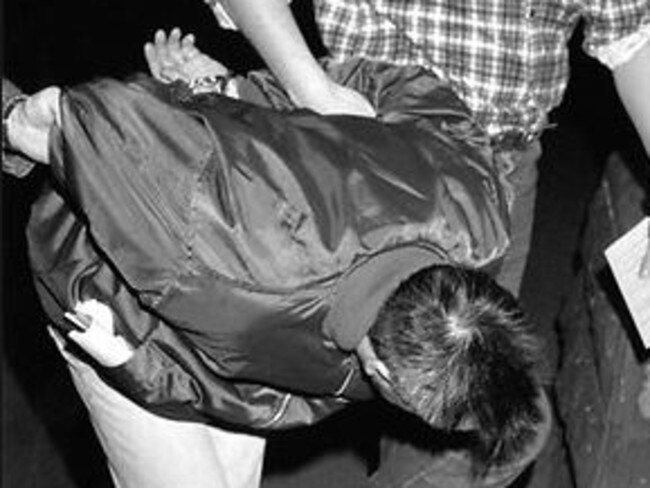
That evening, the armed robbery squad sent a memo to all Victorian police stations warning of a possible revenge killing similar to the 1988 Walsh St police murders.
Constables Steven Tynan and Damian Eyre were murdered in Walsh St, South Yarra, in October 1988.
It was (unsuccessfully) alleged the murders were in revenge for the shooting of convicted armed robber Graeme Jensen by the armed robbery squad.
The memo sent to all police officers after the Tullamarine shooting stated: “Intelligence received by the armed robbery squad (indicates) that repercussions are likely because of the police shooting at Melbourne airport.
“Members are reminded that in regard to the Walsh St murders criminals involved in today’s armed robbery are associated with the criminal element. It is essential that all members exert extreme caution when attending all calls.”
Then head of the armed robbery squad, Det Chief-Insp. David Foley, confirmed the memo was sent on the night of the robbery after two anonymous telephone calls to D24 had warned there could be trouble after the police shootings.
“We are really taking no chances,” Det Chief-Insp. Foley said at the time.
“It is mainly aimed at warning people to take care. We don’t want the same thing to happen to a couple of uniformed members at three o’clock in the morning as happened in Walsh St.”
Det. Chief-Insp. Foley said armed robbery squad detectives knew the potential repercussions and could take the necessary precautions to protect themselves.
“They are all seasoned detectives,” Det. Chief-Insp. Foley said.
“The memo is to stop the young uniformed blokes from being set up at three in the morning, as happened last time.”
Thankfully, no revenge attacks occurred.
THE operation that brought Lee down, Operation Thorn, was started by the armed robbery squad after a $426,000 holdup on a payroll van in Port Melbourne on May 3, 1990.
During that hold up, security guards were abducted at gunpoint.
The NCA, working in conjunction with the armed robbery squad, carried out surveillance on two nominated crooks who, it was suspected, robbed a McDonald’s store in Greensborough.
Two victims had guns held to their heads during that robbery.
Coroner Heffey criticised the armed robbery squad for being “sentence driven” and not arresting Lee’s gang for conspiracy to commit the Ansett holdup at the airport before it happened.
According to detectives, an arrest was considered but there was not enough evidence to support a conviction.
The fact the target criminals had travelled to Bendigo to test fire weapons in the lead up to the attempted airport hold up should have signalled a warning of things to come, she added.
Det. Chief-Insp Foley said in response: “If we knew (exactly) what they were going to do we would have acted to stop it. That’s our responsibility for the protection of life.”
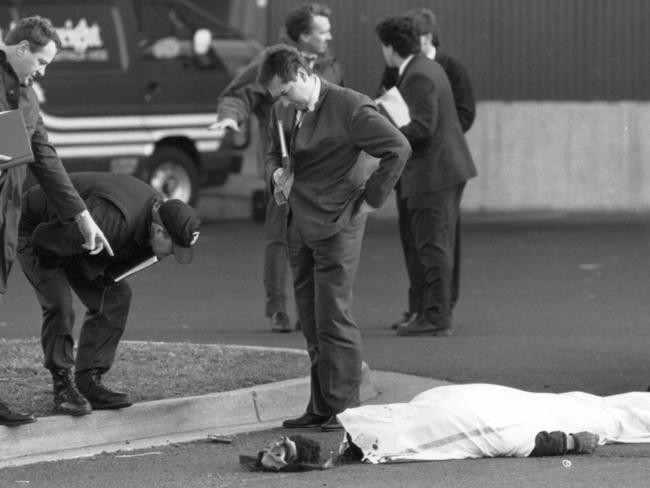
Through their barristers, the two surviving bandits, along with counsel for Lee’s family, had the gall to suggest the armed robbery squad, by failing to act quicker, had allowed the dangerous situation to develop at the airport and “recklessly placed in jeopardy the lives of members of the public, other police members and the suspects”.
What those lawyers failed to mention was the fact the three bandits went armed to the teeth to commit the armed robbery.
As Det Sen-Sgt Ray Watson told the inquest: “The thing that was always drummed into the men and goes without saying is that the safety of the public is of paramount importance.
“We believed that we could control by use of the Special Operations Group — more than control and contain — a most dangerous situation.”
Despite her criticisms and the fact she found the armed robbery squad contributed to Lee’s death, the coroner did say: “Lest there be any doubt, I rule out completely any suggestion that any member of the Victoria Police set out to unlawfully kill Norman Lee or his co-offenders.
“I find that Norman Leung Lee contributed to his own death by placing himself voluntarily in a highly perilous situation for his own gain.”
The other bandit and the wheelman were jailed for ten-year minimum terms.
The wheelman pleaded guilty to three counts of armed robbery and six of theft.
The other surviving bandit, the one shot and wounded, pleaded guilty to three counts of armed robbery, six of theft and one of arson.
The charges related to the Melbourne Airport Armaguard van robbery and the big robbery from the Armaguard van in Port Melbourne.
The wheelman also pleaded guilty to charges relating to the armed robbery at the Greensborough McDonald’s restaurant.
The judge described the robbery crew’s actions as like a “military operation”.
SIXTEEN years before his death, Normie Lee, at age 28, had been charged over the Great Bookie Robbery that netted bandits an estimated $1.3 million from the Victorian Club in Queen St, on April 21, 1976.
At the time, Lee was the proprietor of a dim sim factory.
He allegedly laundered proceeds from the Great Bookie Robbery and bought equipment for his business and renovated his home.
The first man to be charged over the Bookie Robbery, Lee was discharged at committal because there was insufficient evidence linking the money to the robbery.
The commando-like raid was carried out on Victorian bookies as they met to settle bets after the Easter race meetings.
The man who organised the job was Raymond “Chuck” Bennett.
Bennett and Lee had been inseparable.
“They were like brothers,” a policeman once said of the pair.
Bennett wasn’t with Lee on the day of the doomed airport heist.
Bennett was dead, a daring gunman having shot him at Melbourne Magistrates’ Court in 1979 as payback for the shooting death of rival criminal Les Kane.
Armed robbery was a dangerous and sometimes deadly business.


